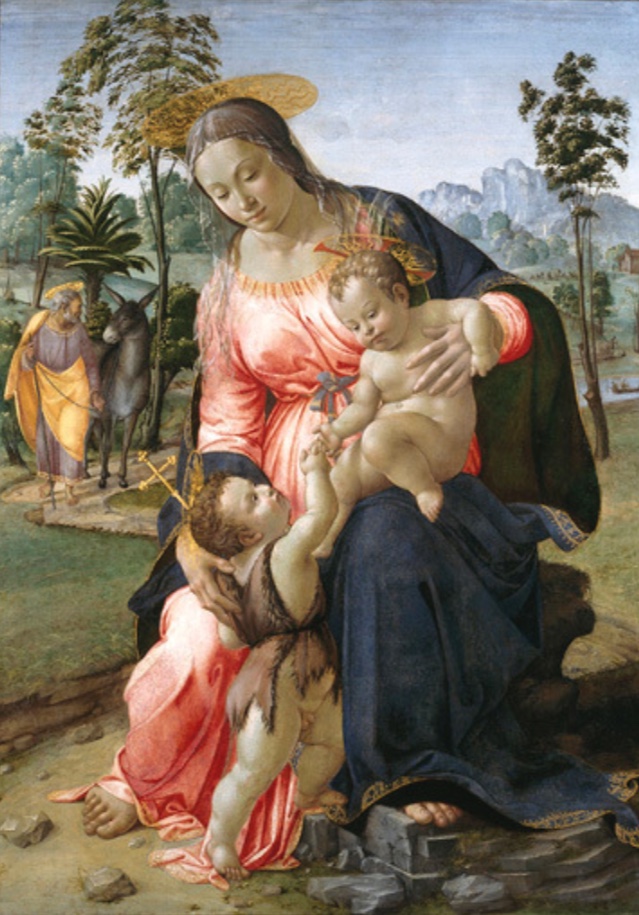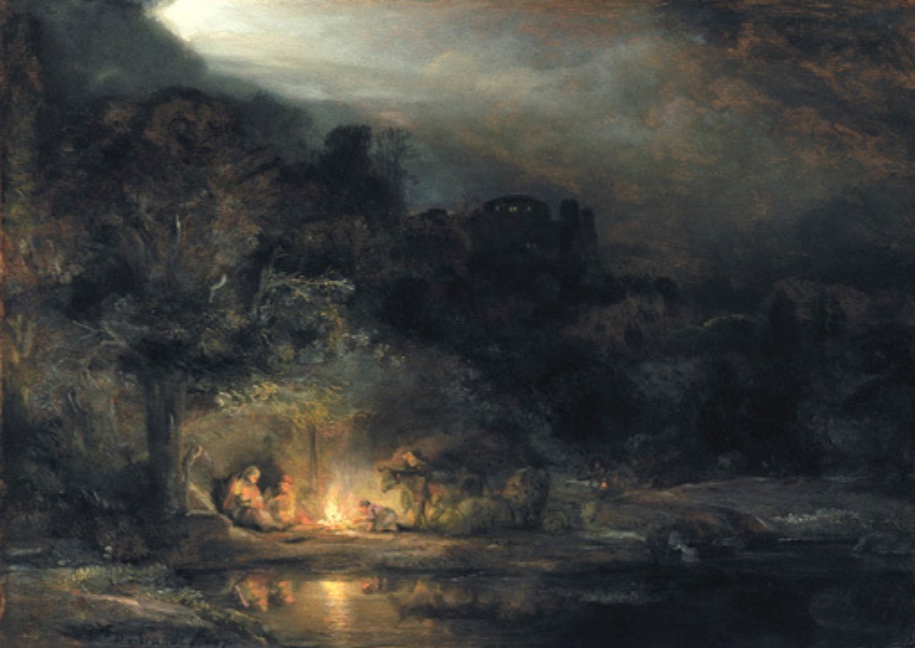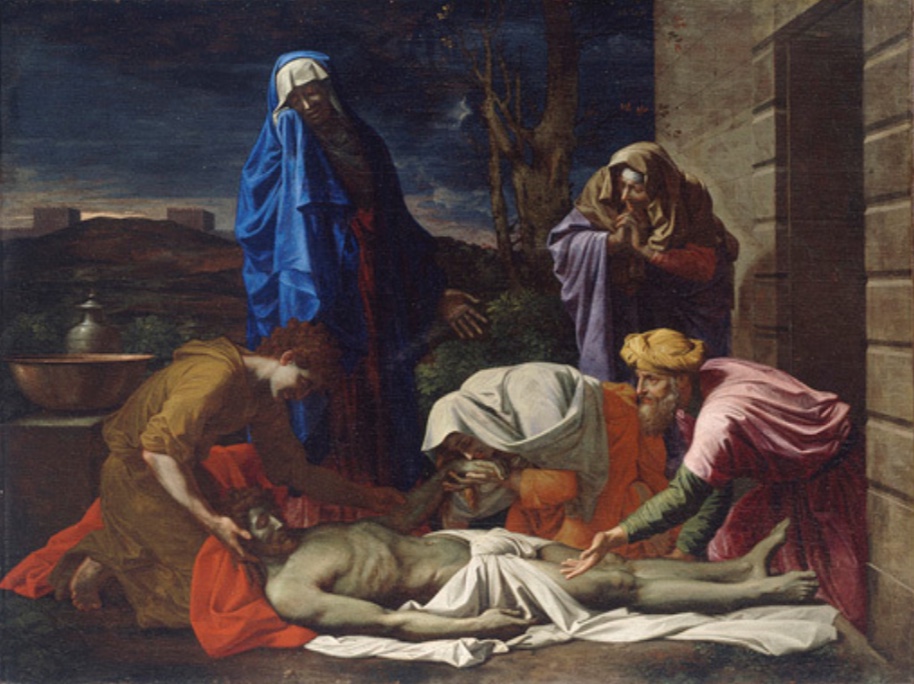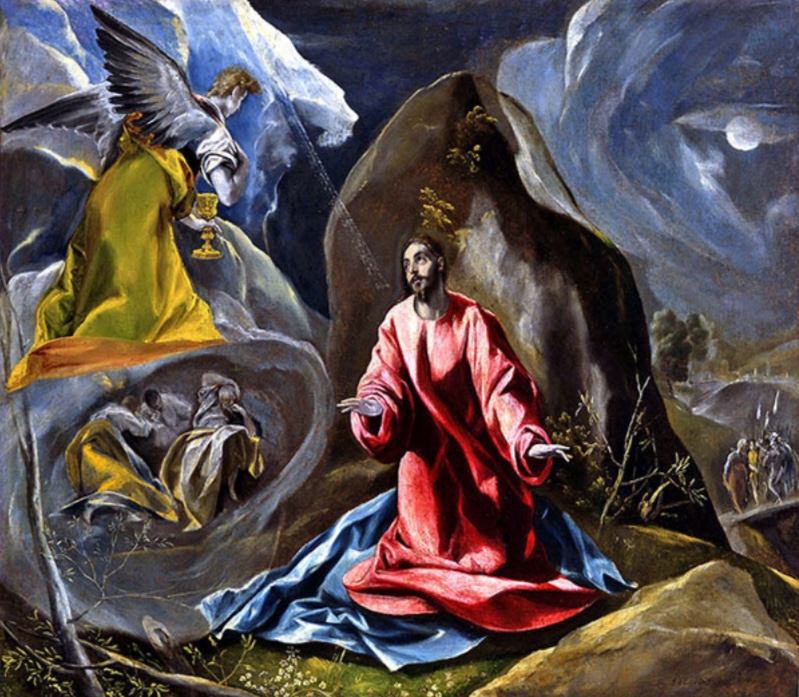
Classical Art and the Renaissance
Highlight
Classical art is a celebration of an ideal world, a world of harmony, perfection, stability, peace, order and permanence.
Classical art represents what we might call the rosy spectacles view of the world, the world as we would wish it to be rather than as it really is. So it is not surprising that the subjects of classical art are mostly religious characters and heroes of history, presented to us as ideals. There is a glorification of nobility, great clarity, an emphasis on line, deep perspective, exact drawing, smooth texture and perfect finish.
Careful and elaborate finish was one of the chief characteristics of classical art. Textures tended to be smooth, due to meticulous or careful finish in the studio. The subjects of classical art were biblical, and heroes of ancient history and myth.

Granacci was a contemporary of Michelangelo, and this painting is a good example of these ideals. The picture shows the Virgin and holy infants seated on a rock in a landscape. The infant John looks up at Jesus while holding a cross in his left hand. The painting depicts the Holy Family resting during the flight into Egypt. St. Joseph leads the donkey towards the seated group.
The figures represent the ideal of harmony, beauty and perfection to such an extent that they are presented to us as almost more divine than human. The artist intended the painting as a representation in visual terms of the doctrine of the Incarnation – the notion that God took on human form so that humans could become like God.
REMBRANDT
Highlight
The ideals of the Italian Renaissance had worked their way as far as the Netherlands by the sixteenth century and gave birth to what became known as the Northern Renaissance.
One of the greatest exponents of the northern tradition was Rembrandt Van Rijn (1606- 1669), who ranks with the greatest artists of all time. Rembrandt painted many biblical scenes but was also a pioneer of what is known as genre painting.
He chose to portray all facets of his society and his self-portraits are among the finest self-portraits of all time. He never strayed far from his central concern: human beings, their spiritual aspirations and worldly realities. He was mainly influenced by the Italian artist, Caravaggio whose famous painting The Taking of Christ is in the National Gallery of Ireland.
From Caravaggio he borrowed the technique known as chiaroscuro (strong light contrasted with deep shadows). He explored to the full these effects and has been called the most dramatic painter in history.

This painting may be small in size but it portrays drama on a vast scale. It depicts the Holy Family resting in a cave, the warm light from a fire, the animals and the figures themselves reflected in a little stream. Shepherds are seen approaching from the right carrying food, one in the distance carrying a lantern. This homely scene is enveloped by the vast world of darkness surrounding it.
We can only imagine what hidden menace may lie in wait among the shadows of the trees. The window lights of Herod’s castle perched on the hilltop, glare down on the scene like eyes searching the dark. The threatening shadowy landscape, probably intended by Rembrandt as a symbol of the evil world into which this child was born, seems so vast that perhaps not even the light of Christ could prevail against it. However, from over the hill on the left, a new light of dawn emerges to scatter the shadows, perhaps symbolizing the hope of future resurrection and the eventual triumph of good over evil.
NICOLAS POUSSIN (1594-1665).
Poussin is acknowledged as the finest history painter of the seventeenth century. He received his art training in Paris before moving to Rome in 1624 where he settled for the rest of his life. Mainly interested in classical antiquity, he was influenced by the Venetian artist, Titian. His life from then on was spent in history painting and subjects from the New Testament.
The Holy Family on the Steps by Nicholas Poussin is an illustration of the classical principle of order and permanence in art. There is no form more stable than the pyramid.
It conveys not only the idea of permanence but also peace and security. Because the eye is drawn to the top of a pyramid, it follows that this is where an important feature in a painting should be placed. The heads of the Virgin and Christ Child are obviously the focal points. They are placed at the apex of the pyramid, facing frontally and where they receive the most direct light. St. Elizabeth and the infant, St. John to the left, are placed further down the pyramid and partly in shadow. St. Joseph is the least important member of the group, and therefore, is almost lost in shadow. Notice, also, that most people’s heads are placed along the lines of the pyramid. What is the significance of the red and purple colours worn by the Virgin?
For the reasons stated, the Virgin is the most important person in the painting and it is to her our attention is primarily directed. Compared with the other figures, she is seated bolt upright, illustrating her physical and emotional strength. On the one hand, she is queen of all she surveys, succoured by an extended family and specially favoured by God: ‘He who is mighty has done great things to me’. Yet she seems rapt in a world of her own, almost oblivious of those around her, lost in deep contemplation and entranced in a vision of the whole: her responsibilities in the here and now to her child and the awesomeness of what the future would surely bring. But she would live with the choice she had made. It can be truly said that Poussin has delivered an awe-inspiring work.
The Entombment, one of Poussin’s late works, can be seen in the National Gallery of Ireland. The artist was suffering from ill health and the death of a close friend, a fact which might indicate a preoccupation on his part with death at this time.

The Virgin and the disciples grieve over the dead body of Christ. St. John raises Christ’s head onto his lap. Mary Magdalen kisses his hand, and behind her the other Mary looks on in distress. The Virgin stands back from the scene, wiping tears of sorrow from her face with her blue cloak. In complete contrast to the warm light in The Holy Family on the Steps, the dark sky heightens the sense of drama, gloom and desolation of this picture. A faint glimmer of light on the horizon may foreshadow the Resurrection.
PIERO DELLA FRANCESCA (1420-1492).
It might be worthwhile taking a step back in time for a look at one painting by Piero della Francesca, a major figure from the Italian Renaissance.
Piero was born in the small town of Sansepolcro, forty miles south-east of Florence in Umbria. He was elected twice as a town councillor in Sansepulcro and carried out several commissions for paintings there. When not residing in his native place, he travelled widely in his search for wider artistic experience, even as far as the Papal Court at Rome.
His painting, The Resurrection (1460-65) was a fresco (wall painting done into wet plaster), painted in 1460-65 for the town hall of Sansepolcro, Umbria, Italy. This is a large work, (89 x 79 inches). The Italian art historian, Vasari, who said that this awesome painting was considered Piero's finest work, described the soldier second from the left as a self-portrait of the artist.
Framed by the trees and tomb, Christ rises in triumph, sternly and majestic. The bare tree on the left and the leafy tree on the right represent respectively the world of the dead and the new living world of the resurrection. Christ’s foot placed on the tomb represents his victory over death. The banner of victory in his right hand has the same significance. The wound on his side is a reminder of his struggle with the forces of evil. The languid, death-like posture of the sleeping soldiers is strongly contrasted with the commanding presence of the risen Christ. Once again the composition, in the form of a pyramid, represents the classical ideal of stability and order, where Christ is seen as bringing these qualities to a disordered and chaotic world.
EL GRECO, 1541-1614.
Finally, a word about one other artist who was influenced by the Italian Renaissance. Born, Domenikos Theotokopoulos in the island of Crete, later known as El Greco, (the Greek), he has been seen by many as the most modern of the Old Masters.
His work played a role in the development of 20th century art. Paul Cezanne, Pablo Picasso and even Jackson Pollock all studied and admired his paintings. His strong colours, his elongated figures and ecstatic expressions continue to stimulate and provoke us today.

El Greco worked for a time in Rome where he was influenced by the art of Michelangelo. He later moved to Spain where he developed the personal style that marks him out today. He finally settled in Toledo where he was provided with commissions from the Church and private individuals.
A few brief words on to two of his paintings - The Agony in the Garden and View of Toledo. In the works of El Greco, space is imaginary rather than real, figures are elongated and colours are pure and unearthly. In The Agony in the Garden, 1590s (The Toledo Museum of Art, Toledo, USA) he distorts space, light and colour to dramatise this tragic moment. Here, space is like what might be experienced in a vision. The viewer is face to face with the monumental figure of Christ in deep meditation, echoing the rock of faith behind and giving some measure of stability to the threatening and chaotic world around him. He accepts his future sacrifice, symbolised in the cup being presented to him by the angel. Nearby, three of his disciples lie asleep, while in another part of the painting a group of armed men are seen on their way to arrest him, the light of the moon shining through the clouds adding to the visionary drama of the scene.
El Greco’s View of Toledo 1598, (The Metropolitan Museum of Art, New York) is equally visionary, providing a view of an ideal city, a New Jerusalem. The skyline is dominated by the royal palace and the cathedral, symbols of power. The light bursting through the dark threatening clouds evokes an apocalyptic scene, the triumph and dominance of the heavenly over the earthly domain. Good for a response in creative writing.
